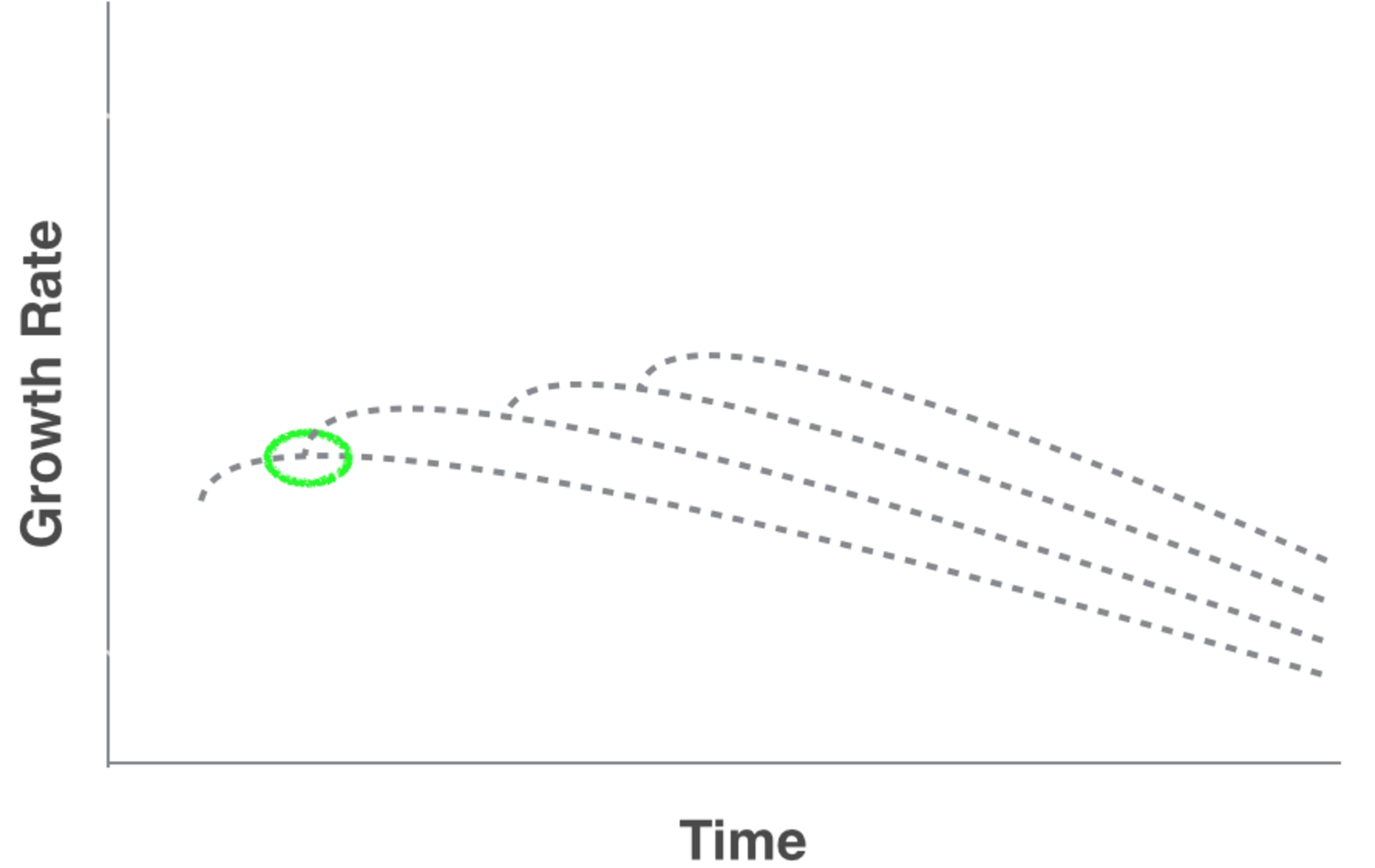The Four Fits Model for a $100 Million Business
Question: For Hubspot's freemium and fully automated (touchless) software business, how can one achieve the highest growth in the least amount of time while being VC-backed?
Solution: The Four Fits Model identifies four interrelated elements that drive company growth: product, market, channel, and model. The author believes these four factors are interconnected and must align with each other.
PMF: Product-Market Fit. There are two types of companies in the world: tailwinds companies and headwinds companies, with the distinction being PMF. Achieving PMF means your product has a group of users who repeatedly engage over time, generating enough profit to support continued growth; it means your product has sticky users, resulting in a retention curve that may decline over time but ultimately levels off.
PCF: Product-Channel Fit. The attributes of the product itself determine the best channels for promotion. Simple, universal products correspond to inexpensive, mass-market channels, while complex, niche products correspond to specialized channels.
CMF: Customer Acquisition and Business Model Fit. On the ARPU ↔ CAC spectrum, high ARPU corresponds to high CVC; low ARPU corresponds to low CVC. The concern is that if ARPU is set too high, low CAC users cannot afford it, and if ARPU is set too low, there won't be enough revenue to sustain high CAC.
MMF: Business Model and Market Fit. Our goal is ARPU × total consumers in the market × the proportion of consumers you can capture >= $100 million. If this equation does not hold true, you need to adjust your business model to increase your pricing or target a broader user base.
When using this growth model, there are several key points to consider:
- The premise is a target VC-backed $100 million business.
- If you want to change one element, you must adjust others accordingly.
- The elements themselves are constantly evolving.
- It is best not to change too many elements at once; if you are unfamiliar with the related fields, you may struggle to manage the changes.
